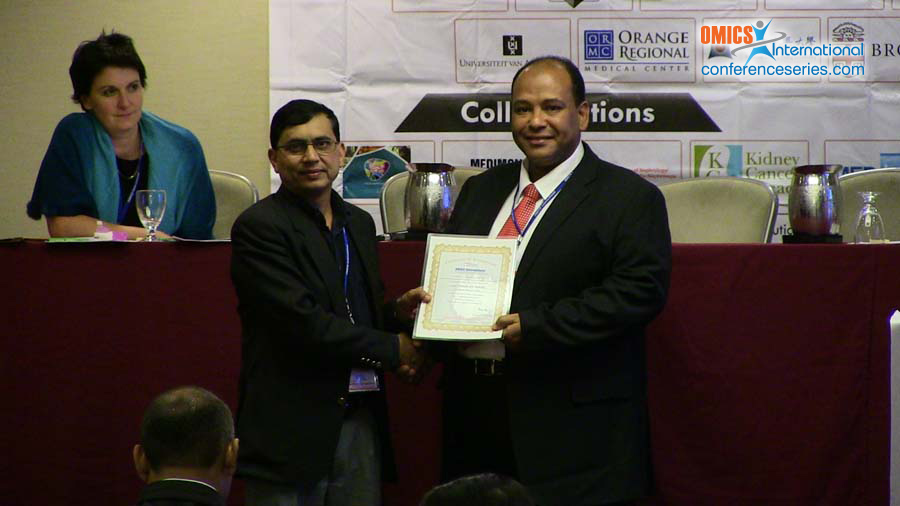
Ayman Aly Seddik
Ain Shams University, Egypt
Title: Challenges in management of diabetic ketoacidosis in haemodialysis patients, case presentation and review of literature, towards management guidelines
Biography
Biography: Ayman Aly Seddik
Abstract
Chronic kidney disease is associated with accumulation of uremic toxins that increases insulin resistance which will lead to blunted ability to suppress hepatic gluconeogenesis and reduce peripheral utilization of insulin. (1) CKD patients fail to increase insulin secretion in response to insulin resistance because of acidosis, 1,25 vitamin D deficiency, and secondary hyperparathyroidism. (2-4) Hemodialysis causes further fluctuations in glycemic control due to alterations in insulin secretion, clearance and resistance. DKA is uncommon in hemodialysis patients because of the abscense of glycosuria and osmotic diuresis which accounts for most of the fluid and electrolyte losses seen in DKA, anuric patients may be somewhat protected from dehydration and shock, although still subject to hyperkalemia and metabolic acidosis. (5) However substantial volume loss can still occur due to a prolonged decrease in oral intake or increased insensible water losses related to tachypnea and fever(2) there is no current guidelines for the management of diabetic ketoacidosis in anuric haemodialysis patients considering their differences than general population , we review of the literature for management protocols and expertise opinions in view of which we suggest to consider the following recommendations While managing DKA in haemodialysis patients : Recommendation 1: diagnosis of DKA should be suspected if there is persistent profound acidosis that does not respond to hemodialysis, or patients with marked symptoms of nausea and vomiting. Recommendation 2: Patients on dialysis have high total body stores of potassium and should not be started on potassium replacement until acidosis is corrected, and hypokalemia is documented. All HD patients should be monitored and if there is evidence of hyperkalemia (clinically or on ECG) immediate treatment with potassium lowering agents or dialysis should be initiated. (1,6) Recommendation 3: Dialysis patients might be fluid overloaded and are unable to excrete fluid load used routinely for management of DKA in non-CKD patients, therefore if fluids are required, small boluses should be used, with continuous monitoring and frequent re- evaluation of hydration status. If the patient is fluid overloaded then consider hemodialysis. (1,7) Recommendation 4: Patients with CKD fail to excrete acid load and are already fluid overloaded. Ketogenisis associated with ketoacidosis further adds to acidosis. This should be corrected with hemodialysis. There is no place for sodium bicarbonate infusion in management of DKA, and the associated sodium, volume and osmotic overload might be problematic in those patients. (1,7) Recommendation 5: Patients with CKD are immune compromised. They are also at high risk of cardiovascular events. These are very common precipitating factors that should be sought when managing any patient with DKA. (1 ) Recommendation 6: Increasing the frequency of dialysis might be helpful as it clears the overload, improves electrolyte imbalance and corrects acidosis .



